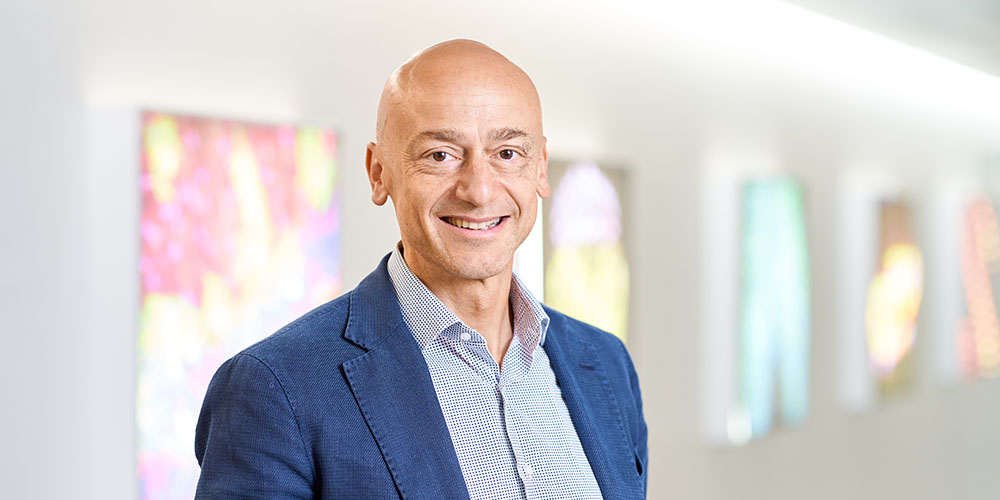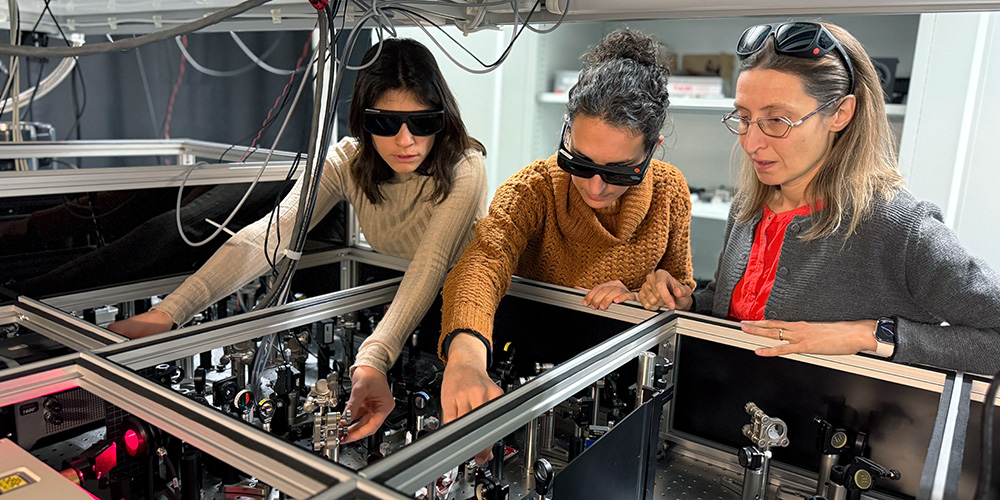The Department of Biomedicine shall become a flagship for translational research
In a year’s time, Professor Ivan Martin will take over the direction of the Department of Biomedicine (DBM) as the successor to Professor Radek Skoda. The DBM has grown and increased its academic strength under Skoda’s leadership. In an interview, Martin explains how he plans to ignite the second stage of propulsion.
05 June 2020
Mr. Martin, you have been part of the Department of Biomedicine since it was established 20 years ago. What has been your experience of the DBM during this time?
What makes the DBM so special is the combination within a single department of basic research at the highest level and its connection with unmet clinical needs. Such a successful implementation of what is known as ‘translational research’ is unique in Switzerland. I couldn’t imagine a better environment for my research, as it is based on the two pillars that also characterize the DBM: we conduct basic research on how tissues develop and we use these findings to engineer tissue grafts for applications in surgery; for example, to repair cartilage damage in knees or intervertebral discs.
A few days ago, the Coordination Committee appointed you as the new head of the DBM starting in June 2021. What will be your biggest tasks?
During his time in this role, the current head of the DBM, Radek Skoda, together with the Executive Board, has tremendously developed the department into one of the most prestigious biomedical research centers in Switzerland. I plan to further promote this development to make the DBM even more visible on an international level, as a reference place for translational research. Thanks to the close collaboration between researchers and clinicians within the DBM, but also with other departments and institutions within the larger scope of the Life Sciences Cluster, Basel offers a unique landscape for translational research. We could establish here a setting similar to Harvard or Mayo Clinic, and the DBM should play a central role.
These are ambitious goals.
I believe in the huge potential for development of the DBM, which benefits from a close relationship between basic research and experimental clinical research. However, the DBM is currently very heterogeneous and scattered over five locations, each with its own culture. This situation is not ideal to enable exchanges between the research groups. The department must grow closer together.
How do you want to approach this?
Joint structures and core facilities could provide opportunities for interactions beyond specific fields of research. Availability of common spaces will contribute significantly to this, when all DBM research groups move into the new building at the present location of the Biozentrum. I recognize one of my main tasks will be to prepare the DBM research community for this physical move and cultural consolidation.
What do you envision this to look like?
We must convince our researchers that it can be enriching to not only attend their own seminars, but also those of different research areas. For example, about five years ago within a joint series of lectures by the DBM and the Friedrich Miescher Institute we conceived a new project idea, for which my group received a Synergy Grant from the European Research Council. This shows that meeting with colleagues from other subject areas can lead to exciting new concepts and research programs.
In this case, it was even an exchange across institutional boundaries.
Exactly. In addition to closer networking within the department, I would like to promote interactions and closer cooperation with other institutions. In the immediate vicinity of the new building we have not only the Biozentrum, the University Hospital and the University Children’s Hospital, but also the ETH Zurich. For example, a research group from ETH’s Department of Biosystems Science and Engineering (D-BSSE) in Basel could be hosted in the new DBM building and vice versa. This would strengthen exchange and cross-fertilization between the DBM and D-BSSE.
DBM can thus become a more strongly networked translational research powerhouse. What role should it play in future in terms of teaching?
The master and doctoral programs at the DBM have not yet been optimally defined. The University of Basel has graduate programs for basic sciences, medicine and biomedical engineering, but I would like to create one for translational research – together with other departments. I believe it would be advantageous for students to experience also in the lectures and teaching programs this close link between basic research and experimental clinical research.
You have a lot on your agenda. What will happen to your own research when you take over direction of the DBM?
My research group comprises more than 30 people. Already now I wouldn’t be able to manage all people and projects on my own, but I have two experienced researchers at my side who also hold adjunct professorships and provide me excellent support in leading the group. In the future they will have to take even more responsibility.
How do you achieve a balance between your free time and the challenging tasks related to your research and soon also to the department direction?
It's not a typical hobby, but on the weekend I help my wife at her ice cream parlor in our garden in Oberwil. Our customers include colleagues from DBM, with whom I manage to have inspiring conversations within an informal and more relaxed context. I hope I can continue doing this when Radek Skoda passes me the baton in a year’s time.
The Department of Biomedicine
The Department of Biomedicine was founded in 2000 as the Department of Clinical Biological Sciences by the university, the university hospital and the university children’s hospital. The main idea was to create a bridge between preclinical and clinical research, and to intensify the collaboration between the respective research groups. In late 2007, the department was given its current name in order to better clarify the close link between basic research and clinical research. The department currently comprises 66 research groups. The research focus areas are oncology, immunology, neurobiology, stem cell research and regenerative medicine.



